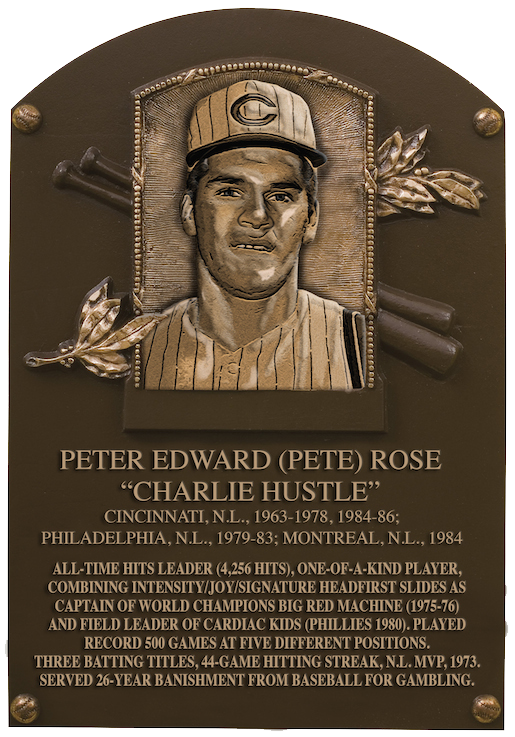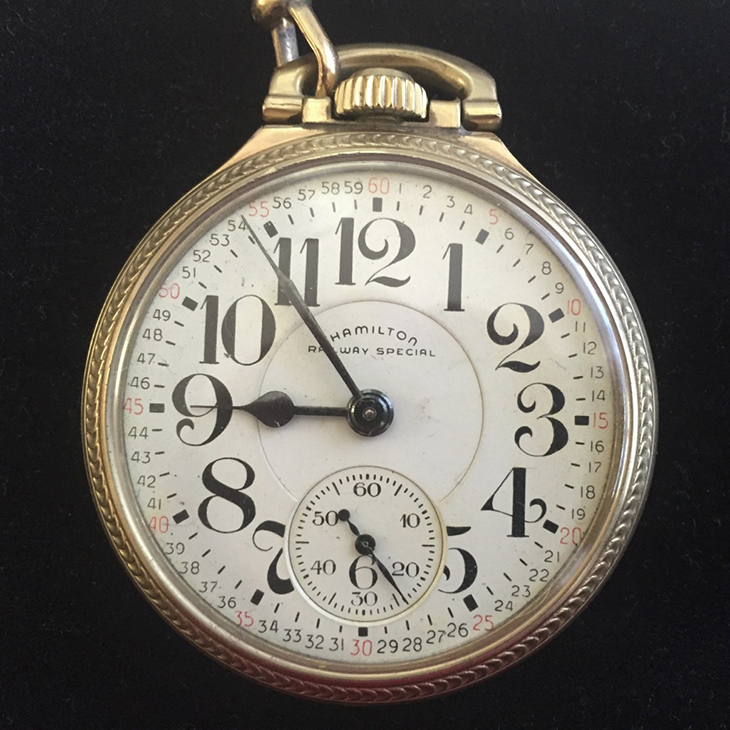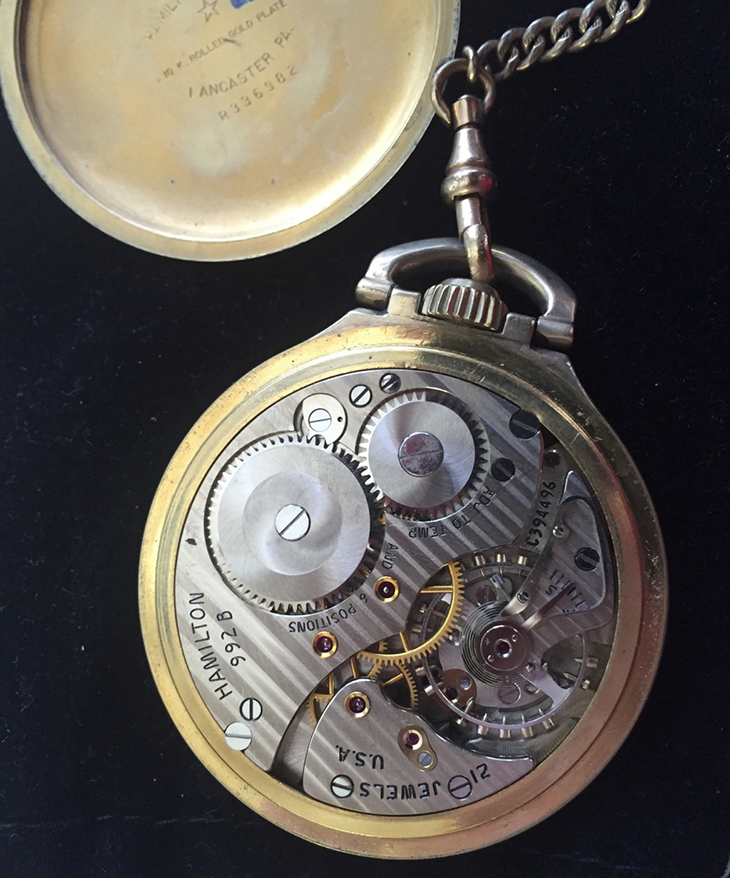March 2015
26 Years Is Enough
March 23 2015 08:19 PM
Pete Rose Appeals for MLB Reinstatement
| New York Daily News |
One of the saddest sights I ever saw, I think, was a few years ago in Las Vegas: Pete Rose sitting alone at a little card table outside a sports memorabilia store in the Retail Promenade (read “mini mall”} of the Mirage Hotel, selling his autograph. It was the middle of the afternoon, a weekday, pretty much just us and Pete. I had no idea he would be there, we were just walking by on our way somewhere else and there he was. I spotted him, recognizing him instantly, but my brain couldn’t make it jibe fast enough. Pete Rose? Really?
He looked so small and so sad and so alone.
I couldn’t bring myself to walk over. And I couldn’t bring myself to pull out my phone and snap a picture. It would have been like taking a picture of a corpse alongside a dumpster, like a photo Weegee would have shot, but with the corpse still alive and watching you.
Today Pete Rose petitioned MLB Commissioner Rob Manfred to lift his lifetime ban from baseball.
Twenty-six years of exile is enough. Major League Baseball, and all of us who thought the ban was justified, have made our point. It’s time to move on. It is time to forgive Pete Rose and allow Charlie Hustle to come home.

| New York Daily News |
One of the saddest sights I ever saw, I think, was a few years ago in Las Vegas: Pete Rose sitting alone at a little card table outside a sports memorabilia store in the Retail Promenade (read “mini mall”} of the Mirage Hotel, selling his autograph. It was the middle of the afternoon, a weekday, pretty much just us and Pete. I had no idea he would be there, we were just walking by on our way somewhere else and there he was. I spotted him, recognizing him instantly, but my brain couldn’t make it jibe fast enough. Pete Rose? Really?
He looked so small and so sad and so alone.
I couldn’t bring myself to walk over. And I couldn’t bring myself to pull out my phone and snap a picture. It would have been like taking a picture of a corpse alongside a dumpster, like a photo Weegee would have shot, but with the corpse still alive and watching you.
Today Pete Rose petitioned MLB Commissioner Rob Manfred to lift his lifetime ban from baseball.
Twenty-six years of exile is enough. Major League Baseball, and all of us who thought the ban was justified, have made our point. It’s time to move on. It is time to forgive Pete Rose and allow Charlie Hustle to come home.

Hamilton 992B Railway Pocket Watch, aka Hamilton Railway Special
March 19 2015 01:32 PM

The Hamilton grade 992B is one of the most precise mechanical pocket watches ever made. It has 21 jewels, 16 size, is factory adjusted to keep accurate time in all 6 positions, and is lever-set. it is among the highest quality consumer items ever made in the USA.
Manufactured in Lancaster, Pennsylvania by the Hamilton Watch Company, the 992B was introduced in November 1940 and produced through 1969.
Railroad Standard Watches are specialized timepieces that once were crucial for safe and correct operation of trains in many countries. A system called Timetable and Train Order, which relied on highly accurate timekeeping, was used to ensure that two trains could not be on the same stretch of track at the same time. These railroad-grade pocket watches had to meet the stringent standards of the General Railroad Timepiece Standards adopted in 1893 by almost all railroads.
Watches also had to be regularly serviced and certified to keep time accurately. Each railroad had a “Watch Inspector” or inspectors who were in charge of setting and maintaining the fleet of watches carried by the engineers, conductors, switch yard controllers, etc. Typically the watches were brought in every other week to be checked, and set if necessary. The employee would receive a “watch card,” or a certificate that his watch was inspected on a certain day, and would need to produce a current certificate if challenged by a manager.
The 992B surpassed the adopted standards. It had 21 friction-set ruby and sapphire jewels, four more than the American Railway Association minimum requirement. All upper jewel settings are gold. The center wheel is round arm gold, and the third and fourth wheels are round arm gilt. The balance wheel is a monometallic beryllium-silver nickel alloy called Aurium (Hamilton’s exact composition of the alloy remains a secret). The escape wheel is steel. Factory adjusted to keep accurate time in all 6 positions. 992B has the new Elinvar Extra hairspring. It is white; the older regular Elinvar hairsprings were blue. Factory specifications permitted variations of no more than -0, +5 seconds per 24 hours.
The pocket watch had all but disappeared in America by the 1960s as wrist watches became more accurate, more affordable, and more accepted (they were once considered ‘unmanly’). Pocket watches in railroading began to vanish, too, just as railroading itself was almost disappearing. Today, with wrist watches being replaced by the mobile telephones we all carry, it is even more of an eccentricity to own a pocket watch, much less carry one.
Sources: Ken Rockwell, Guido Socher, Wikipedia

Pictured above is my father’s Hamilton Railway Series 992B. In watch geek parlance it is a Model 16 #537 with a Heavy Gothic (HG) full numerical (N) Blind Man (BM) double sunk (DS) dial. It’s date of manufacture was 1953. He bought it new in 1954 when he was a brakeman on the Louisville and Nashville Railroad (L&N), based in Pensacola, Florida and working freight lines running from River Junction, Florida to Dothan, Selma, and Myrtlewood, Alabama. The watch was purchased new and cost him $75 or so ($730 in 2015 dollars). He was only 22, had most recently been working as a part-time fireman at the Florida State Hospital in Chattahoochee, and was newly married with a newborn son (me).
There is no way he could have afforded that watch at that point in his life. For my dad in 1954, $75 might as well have been $10,000. Or $50,000.
He really wanted that watch.

Sixty-two years down the road and 20 years after my father passed away, his pocket watch keeps on ticking. Not mint condition anymore but not so far from it, either: the crystal is unbroken and unscratched, the rolled gold-plated case is dulled yet handsome because of it and, as you can see in the photos, the works appear pristine (these pictures were taken yesterday BEFORE I took it in for a long overdue cleaning). All original parts, even the chain. The mainspring remains strong like bull. The dial face shows some wear but, hey, not nearly as much as my face does.
The 992B is to pocket watches what the DC-3 is to airplanes: a workhorse that is elegant in its homeliness, a testament to design and engineering and practicality, a true and lasting thing of beauty and utility.
Time is an illusion. I know. But watches, real watches, are something else.
